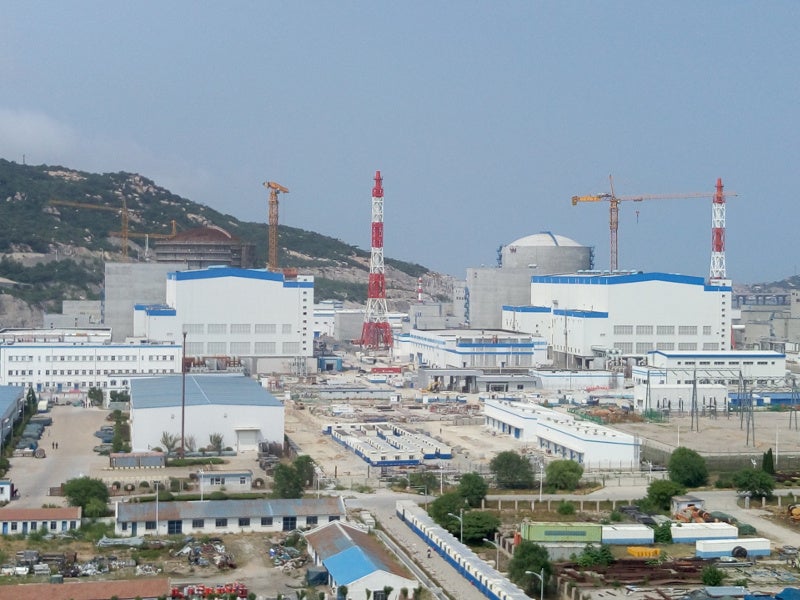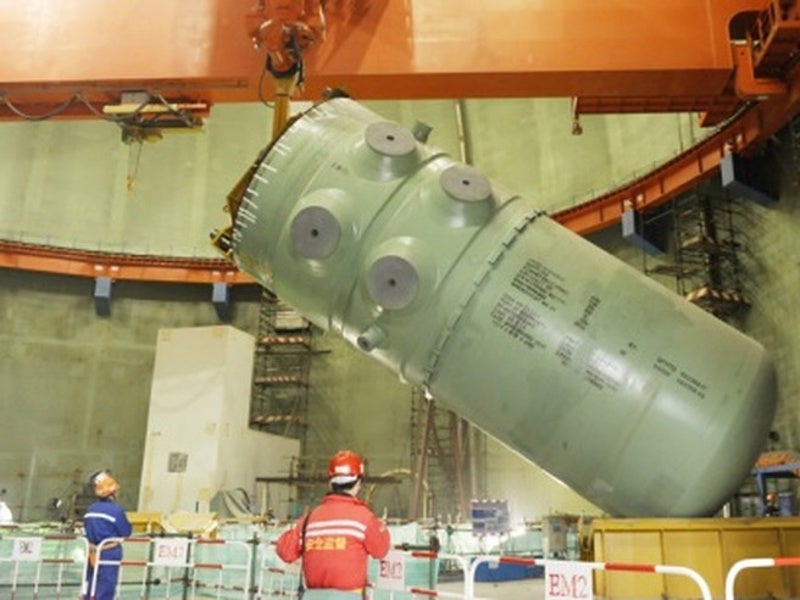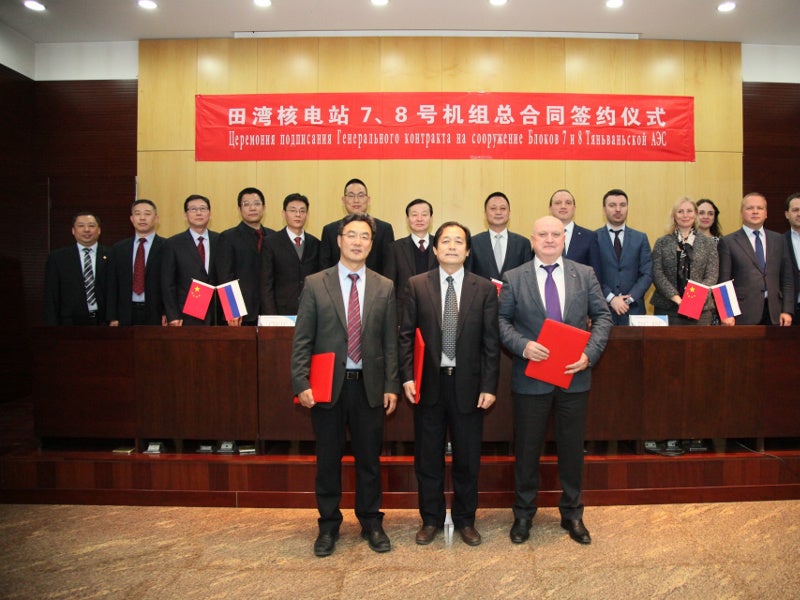The Tianwan nuclear power plant (NPP), also known as the Lianyungang NPP or Jiangsu NPP, is located on the coast of the Yellow Sea, at Lianyun, in the Lianyungang district, Jiangsu province, China.
It is owned and operated by Jiangsu Nuclear Power Corporation (JNPC), a joint venture between China National Nuclear Power (50%), Shang Hai HeXi Power Investment (30%), and Jiangsu Guoxin Group (20%).
The power station has undergone multiple expansions, since it started commercial operations in May 2007.
It currently has four operational VVER-1000 pressurised water reactor (PWR) units, in addition to two domestically developed CNP-1000 PWR units being constructed to come online by 2021.
Further, the facility is planned to be installed with two VVER-1200 reactors from Rosatom, as the seventh and eighth generating units, with which the Tianwan NPP is expected to reach its planned installed capacity of 8.5GW by 2027.
Tianwan NPP phase one and two development details
The Tianwan NPP is being developed in four phases, with each phase involving two reactor units.
The phase one development was started after China approving Russia’s VVER-1000/V-428 reactor design for implementation in 1997, following a nuclear power co-operation agreement between Russia and China in 1992.
Construction on the Tianwan-1 and Tianwan-2 reactors was started in October 1999 and September 2000, respectively. The first two units were comissioned in May and August 2007, respectively.
Tianwan-1 and Tianwan-2 were the first nuclear reactors in the world to have a core catcher installed at the bottom of the reactor core barrel for providing containment in case of a nuclear meltdown.
The phase two development of the NPP was started with Rosatom signing a co-operation agreement with CNNP for the construction of Tianwan-3 and Tianwan-4 units in October 2009.
Construction of the third and fourth VVER-1000/V-428 PWR units was started in December 2012 and September 2013 respectively, while commissioning took place in February and December 2018, respectively.
Tianwan-5 and Tianwan-6 reactor details
The phase three development of the NPP involves the construction of two CNP-1000 PWR units of 1,000MW of electrical and 2,905MW of thermal capacity each.
The three-loop CNP-1000 reactor design was domestically developed by state-owned China National Nuclear Corporation (CNNC).
Although the construction of the units was originally scheduled to be started in 2011, the Fukushima Daiichi incident delayed the development by approximately five years.
Construction on Tianwan-5 was started in December 2015, followed by that of Tianwan-6 in September 2016.
Commissioning of unit five is expected in December 2020, while unit six is expected to be online by October 2021.
Details of the Tianwan-7 and Tianwan-8 VVER-1200 reactors
Two Russian-designed VVER-1200 reactors are planned to be added as part of the phase four development of the Tianwan NPP.
Construction on Tianwan-7 is scheduled to be started in May 2021, with commissioning expected by 2026, while Tianwan-8 is expected to enter construction phase in March 2022 and commence commercial operations by 2027.
VVER-1200 reactor represents design improvements over the VVER-1000 reactors currently operating at the Tianwan NPP.
The seventh and eighth reactor units at the plant will have a gross electrical capacity of 1,198MW and thermal capacity of 3,212MW each.
Apart from 20% higher power output, the VVER-1200 reactors are designed for 60 years of operational life, compared to the 35-year life of VVER-1000.
VVER-1200 has also an 18-month refuelling cycle, whereas VVER-1000 has 12 months of life.
Power transmission
The electricity generated by the Tianwan NPP is evacuated to the national grid through a sophisticated network of 1,000kV high-voltage alternating current (HVAC) and 800kV high-voltage direct-current transmission (HVDC) lines.
Contractors involved
Russia’s state-owned Rosatom provided four VVER-1000 reactors for the NPP, under two separate contracts awarded in 2007 and 2010.
OKB Gidropress, a subsidiary of Rosatom, designed and developed the VVER-1000 reactors.
AtomStroyExport (ASE) and ZiO-Podolsk, two other subsidiaries of Rosatom, supplied the nuclear islands and steam generators for the first four generating units of the nuclear power station.
Framatome supplied the safety instrumentation and control (I&C) system for unit three of the Tianwan NPP in May 2018.
China Nuclear Power Engineering (CNPE), a subsidiary of China National Nuclear Corporation (CNNC), was awarded the engineering, procurement, and construction (EPC) contract for Tianwan-5 and Tianwan-6, in March 2011.
ASE EC, the engineering division of Rosatom, was contracted to build the seventh and eighth reactor units of the Tianwan NPP, in March 2019.
TVEL Fuel Company, a Rosatom subsidiary, signed a nuclear fuel supply contract with Suneng Nuclear Power Corporation and China Nuclear Energy Industry for Tianwan-7 and Tianwan-8, in July 2019.





